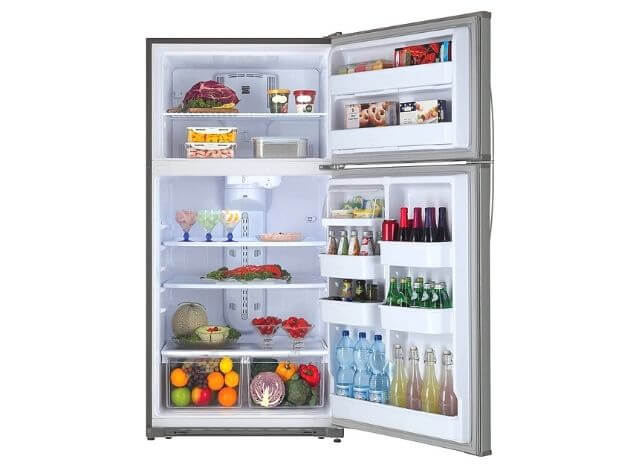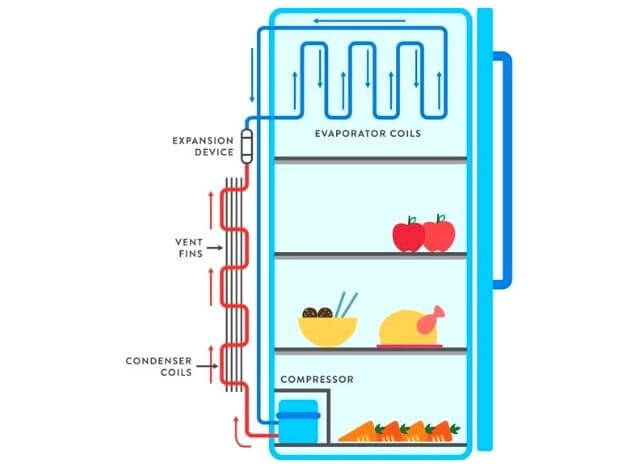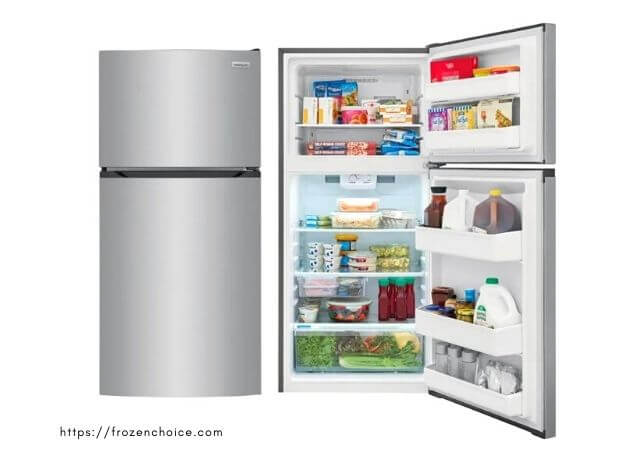Refrigerator is a great device in preserving food. By making it cold, fridge inhibits the growth of microorganisms, keeping your food fresh with original taste. So, many people have the same question: “How is heat transferred in a fridge?”. Are you one of them?
If you are keen on science and technology, the way heat is transferred in a fridge is surely an interesting subject to widen your knowledge. But even when you are not, this article will help break your misunderstandings about what really makes your food products cold. Let’s start.
A constant law of heat transfer

Phenomena of heat transfer are very familiar, we can see them in our surrounding environment
Heat transfer
Before exploring what really makes food cold in a fridge, it’s necessary to have a general look at heat transfer.
Heat transfer is such a big part of engineering that if you want to have in-depth study, it will lead to many amazing aspects, also known as thermal mechanisms such as convection, conduction, radiation or phase change in energy transference of heat.
You can see these aspects easily in your surrounding environment. But the most familiar one is heat conduction, also known as diffusion. Hot water turns cool after minutes, your drink with ice gets cooler and ice melts. They are just two of a series of phenomena with the same features.
Therefore, scientists in Physics have studied for many centuries and attained so many meaningful discoveries about heat conduction, which can be described in short that heat always transfers from higher temperature areas to lower temperature areas to reach the same one. In physics class, many teachers give an example of liquid to demonstrate this law: when liquid evaporates, it absorbs heat. When liquid condenses, it releases heat.
Research the key “thermodynamic” and you will come to an ocean of knowledge about heat transfer. And there you can see heat diffusion with the last result of heat balance is the second law of this field.
What really makes your things cold in the fridge?
So, in the case of your fridge, your food products getting cold after a while put in storage areas never result from the misunderstanding that fridges somehow add low temperature to your things. In fact, it takes higher temperature from them with the law of heat diffusion.

If you are still confused, don’t worry. You will know exactly that way of heat transfer in the following.
How is heat transferred in a fridge?
Main parts of fridge
Now we come to the most interesting section of this article. To answer this question, first of all, let’s explore the structure of fridges.

There are always five components playing roles in heat transfer in every single fridge including expansion device, evaporator and condenser coils, compressor and refrigerant. These components create repeated cycles of heat transfer, making food products always cold in the fridge. Thereby, fridges are the best device in preserving food products of all time.
Cycle of heat transfer
The cycle starts with refrigerant. It is a liquid entering the expansion device. When it passes through, the sudden drop in pressure makes it expand cool and turn into a gas.
When refrigerant flows around the evaporator coil, it absorbs and removes heat from the food stored inside. This period directly makes food cold.
The pressure and temperature of refrigerant (now in the gas state) are increased by the compressor. It presses this gas, making it a high-pressure and hot gas. The refrigerant then flows through condenser coils on the back of the fridge, radiating its heat to the atmosphere and cooling back into a liquid as it does so. That’s why you feel very hot when you are next to the fridge. This feature refers to a common tip to preserve your device well that you should not put your fridge leaning against the wall.
The refrigerant enters again the expansion device and the cycle repeats itself. So, basically heat is constantly picked up from the inside from the fridge and taken outside of it.
Further reading: Why Are the Side Walls of the Refrigerator very Hot?
Conclusion
With great function, refrigerators are really an important device in modern life when people are busier and don’t have enough time to buy food and cook everyday.
This article with much useful information hopefully helps you know better about the way your fridge makes food cold and can answer the question “How is heat transferred in a fridge?” in the simplest way.
Let’s take care of your lovely fridge and always have fresh food with great taste. Thank you for reading!
Reference:
1. Heat Transfer & Refrigeration Cycle, www.zero-zone.com, Retrieved on Dec. 1, 2021
2. Heat transfer, en.wikipedia.org, Retrieved on Dec. 2, 2021

